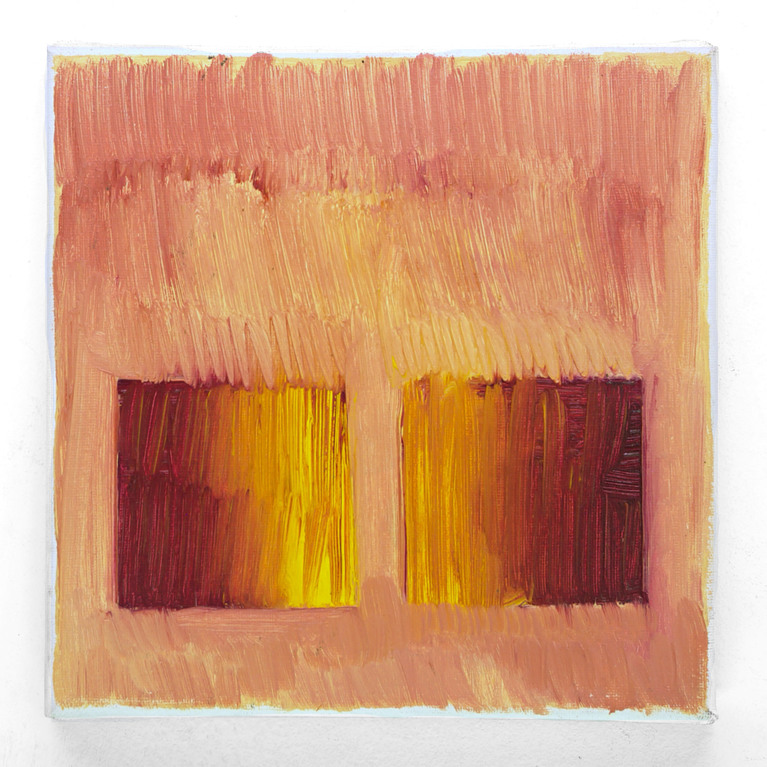Emmanuel BALLANGÉ

Sans titre, 2017. Huile sur toile, 20 x 20 cm.
FR.
Né le 11 août 1972, à Rochefort sur Mer, il vit et travaille à Bordeaux.
Peindre comme un scientifique fait ses hypothèses : avec une certaine distance… Pour Emmanuel Ballangé, depuis le départ de son trajet artistique, peindre a toujours été une interrogation sur sa présence face à la toile (avec un certain désir d’atopie, être là où on n’a pas prévu). Se contenir, être en retrait, ne pas trop faire, ne pas être trop là, que les choses s’échappent… Autant d’injonctions qui délimitent son espace de travail. Et si le travail de peinture d’Emmanuel Ballangé est le plus souvent structuré en séries, il tient à ce que chaque toile réponde à un impératif : poser question…
Après des études d’anthropologie à l’université de Bordeaux III, Emmanuel Ballangé a été rattrapé par la peinture vers l’âge de 30 ans et s’est formé en autodidacte. Il est convaincu que la peinture prend en charge la question du regard d’une manière spécifique. La peinture induit un regard distancié non limité à la simple fonction de reconnaissance. Elle permet un regard se regardant regarder, un regard réflexion.
EN.
Born in 1972 in Rochefort sur Mer, he lives and works in Bordeaux.
Painting like a scientist would hypothesise : with a certain distance… Since the start of his artistic career, Emmanuel Ballangé has always viewed the act of painting as a way of questioning his own presence when facing the canvas (with a certain desire for atopy – being somewhere one did not expect to be). Holding back, withdrawing, not doing too much, not being there too much, letting things evade him… As many injunctions that delimit his workspace. And while Ballangé’s paintings are more often than not organised into series, he still wants each canvas to answer one requirement : raising a question…
After studying anthropology at Bordeaux III University, Emmanuel Ballangé’s love of painting resurfaced in his thirties and he began to teach himself. He is convinced that painting takes on the question of the gaze in a very specific way. Painting induces a distanced gaze that goes beyond the sole function of recognition. It allows one to look at oneself looking – a self-reflective gaze.
Translated by Lucy Pons
Site internet et réseaux sociaux
Documents d'artistes Nouvelle-Aquitaine
Partenariat Centre national des arts plastiques / Réseau documents d'artistes